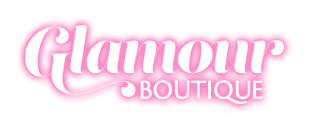Become a expert on Your Corset!
If it’s your first time corset shopping then don’t be put off by the traditional terms/vocabulary. To help you through the process we have compiled a short list of the one’s you will hear and read most about as you do your research on the internet.
Back-lacing: Traditional waist-cinching corsets are laced the length of the corset at the back with strong cord/lace. Corsets intended more for decoration, rather than cinching they tend to have thin laces or ribbon for lacing. How tight you lace will determine the tightness of the cinch.
Boning: In a traditional design the corset has a number of panels making up the corset interspersed with long ‘bones’ to give the corset both strength and flexibility. In olden days these were indeed made from animal bones but nowadays tend to be of flat or spiral steel. Plastic boning tends to be used in purely decorative corsets – if you attempt to cinch these you will end up tearing the corset.
Busk: Broader metal plates/boning where the corset is fastened together – usually at the front of the garment. Fastening normally done with strong clips though some corsets have zippers for the busk. The busk takes the strain of a good deal of the cinch and like the back lacing must be strong and of good quality material so as not to compromise the cinching ability of the corset.
Cincher: The term often used to describe a short underbust corset of 10 inches or less in length. At that length they tend to only cinch the waist and do not have the length top bring in the lower abdomen too. Usually has only 4 fasteners on the front busk.
Modesty Panel: Sometimes also referred to as the Privacy Panel, this is a curtain of fabric sewn into one side of the corset alongside the lacing eyelets at the back. It is drawn across the gap between the the wearers flesh and the laces and is intended to protect the cords/laces from being soiled by sweat/body oils and to stop laces rubbing the flesh. Many corset-makers have dispensed with the panel as it often bunches up during the lacing and so again, compromises the cinching of the garment.
Natural Waistline: The point at which a true and accurate measurement for sizeing is obtained which is the narrowest part of the waist; for a female this is approximately 2″ above the nave and for a male torso it is at the lower level of the actual navel. Taking the Natural or Actual Waistline measurement you then deduct 4″ to get the required size e.g. if the Natural Waistline is 32″ you then choose a 28″ corset. Most good corset stores online will describe this in the Size Chart/drop-down.
Overbust Corset: A corset sometimes also referred to as a Longline Corset because it stretches in length from coverage of the bust to just above or even over the hips. The bust area can be flat or two individual cups intended to lift and support the bust.
Underbust Corset: The most common style sold today that is worn just below the bust and stretches down to just over the hip and sometimes below. As distinct from a Cincher in that it usually stretches down the front abdomen an extra 1.5 to 2” to give extra support and cinch to the lower abdomen as well as the waist. Normally has at least 5 fasteners on the front busk.
